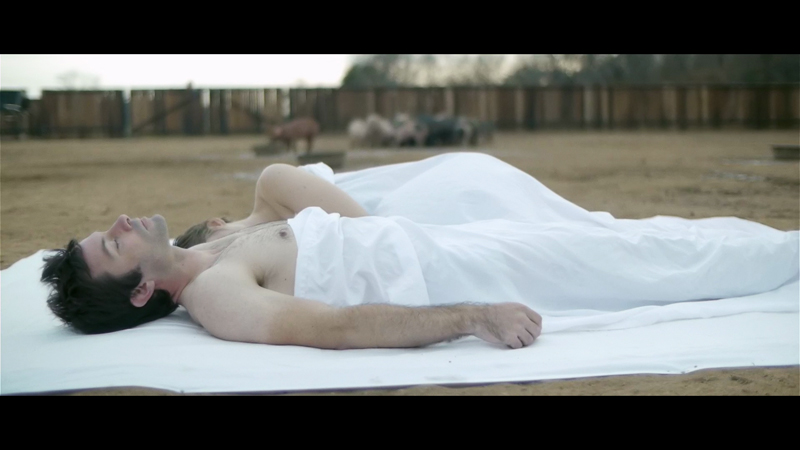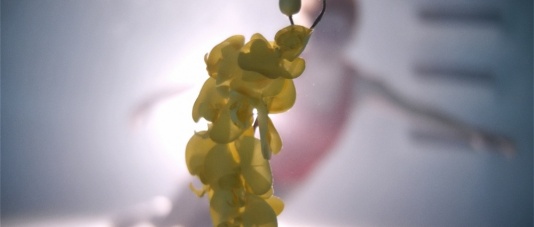There Is More Day To Dawn: What to Make of Upstream Color
Upstream Color is an artsy movie that generates a wide range opinions. The definition of ‘artsy’ can be tricky, but, like pornography, you know it when you see it. To me, ‘artsy’ implies three things:
1. A meaningful degree of cohesive and deliberate style that permeates the movie.
2. A lack of classic movie ‘tropes,’ i.e. signposts and guidelines that are traditionally used to draw the audience’s attention to important plot points and character types. (Classic example: musical cues that introduce an evil character, telling us how we should feel about him before he even speaks)
3. A degree of ambiguity; some major plot points are up for interpretation, as well as the feeling that the movie itself has a moral or ‘point’ above and beyond the plot.
You can argue the specifics, but when people talk about a movie being ‘artsy,’ this is what they’re talking about. Inception and American Beauty are classic examples of movies that do numbers 1 and 3. The Fall and The Tree of Life do all three. See the difference? There’s a degree of relatability there. The first two movies invite you in; they are crafted to do some of the heavy metaphysical lifting for you. The second two are approachable, but it’s you, the viewer, that must do the approaching. They require a degree of participation and involvement. They are not movies to be watched casually.
Upstream Color is such a movie, too.

Let’s get the caveats out of the way first. This is the part where I sound like a pretentious ass and come up with a bunch of words that boil down to me holding up my hand and saying “you must be THIS tall to enjoy the movie!”
But you do. First of all, you have to be able to do without tropes. You have to be OK with inferring and deducing things yourself without help from the narrative structure. Second, Upstream Color is fragmented, the narrative broken, scenes transitioning to other scenes seemingly at random, not out of order, but unfinished. Third, there’s very little dialogue. And fourth and most importantly, you have to have patience. If you’re one of those people who turns a movie off after 10 minutes because you don’t understand what’s happening, this is not a movie you’ll enjoy.
Now that we’ve got that out of the way…
Let’s talk about the positives. For me, this is a sci-fi ‘puzzle’ movie of the first order. At its heart, the genre of this movie is “ordinary people, near-future setting, strange stuff happening, go.” Behind the style, the mood, the minimalist dialogue, that’s what we’re dealing with here. In fact, if you’d permit me an SAT-style analogy…
Gone in 60 seconds : Drive : : The Happening : Upstream Color
Boom! Chew on that analogy for a minute. I’m pretty proud of that analogy, actually. Really, that could be the whole review. Oh, you want a little more? Let’s talk about the plot. By its nature, Upstream Color is difficult to summarize. For one thing, because so much of the “punch” is tied up in visual and especially auditory cues as opposed to dialogue, it lends itself well to a viewer going in with no preconceived notions who’s able to let the whole experience wash over them as a whole instead of trying to break it down into discreet plot points. After all, “parts of the whole” is one of the main themes of them movie. From the Sundance publicity flier: “A man and woman are drawn together, entangled in the life cycle of an ageless organism. Identity becomes an illusion as they struggle to assemble the loose fragments of wrecked lives.”
And that’s a fair description, as bizarre as it sounds. Sketching and understanding that life cycle is the broad focus of the entire movie. We see most of that outline through the lens of Kris (Amy Seimetz) and Jeff (director and screenwriter Shane Carruth of Primer fame), which brings me to another strong suit: Amy Seimetz.

I really hope this movie lands her more roles, because she’s fantastic in Upstream Color. Shane Carruth is workmanlike as Jeff; he does his job, he plays off Seimetz well, and if he doesn’t bring down the house it’s quite understandable as in addition to acting he’s also the director and screenwriter and composed a big chunk of the music. It’s Seimetz, though, who really ties the piece together. In a minimalist, understated way, she tells us everything we need to know about her character with a glance, a gesture. When this bizarre, unfathomable thing happens to her – in the beginning of the movie, her life is completely ruined by the unnamed thief, and in such a way that she can’t even understand what’s happened to her – she has this strength of character in standing tall afterwards, combined with her closed-off vulnerability… it’s just amazing to watch.
A third strength. The movie looks beautiful and sounds beautiful. Sound, color, and sensation play such an important role that watching Upstream Color is almost a tactile experience. But what separates it from the pack is that behind the style is a heap of substance; the themes are tight and well-articulated. Woven through the disjointed narrative and beautiful but oddly disturbing visuals are clear themes mirrored in Walden (an essential element, itself, to the movie) of living simply, connecting with others through nature, and the sometimes disjointed, sometimes painful path we take to fulfillment and happiness.
Upstream Color is available to stream on Netflix, right now. The next time you find yourself in the right mood (pensive, exploratory, creative, altered, suggestive, wistful, intrigued, disturbed, all of the above), do yourself a favor and watch it. It’s not a movie to watch while you’re doing something else, like balancing your checkbook or making dinner, but if you give it your undivided attention for 96 minutes and let it take you on a journey, on its own terms, you’ll come away from the experience fulfilled.
If nothing else, you’ll see some beautiful visuals:




Yes, the movie has something to do with pigs. Pigs are kind of essential to the story, actually. All I can say is, it makes sense in context. Or as much sense as it’s going to make. Whatever, just watch it.




You do a nice job of addressing the “problems” with art movies without apologizing for them or making them seem like some mysterious Other, so good on you for that. A lot of people seem to have a phobia of movies that eschew normal narrative devices, but I don’t think anyone makes an “art” movie with the intention of looking cool or alienating people.
Well, maybe some do to a degree, but by and large…
Anyway, I’ve been sitting with this movie in my Amazon rental queue for about a week now, and hope to get to it this weekend. At this point in the summer I could do with a change of pace. Nice review.
Seriously, I can’t give this movie enough thumbs up. It’s brilliant. It’s the kind of experience where you’re not entirely sure what’s going on and then, when you are, you’re even questioning whether what’s happening is really happening. By that point (if you’re a sucker for great characters you care for like I am), you’re hooked.
Methinks you’re right, though, in that it takes being in a proper frame of mind to truly appreciate UPSTREAM COLOR.
I also quite liked the movie, and had a number of debates with people over the point of it. I’ve noticed a lot of people feel very alienated by this movie, and I think there is a good reason why. Some art films have things to “latch on to”, so that at the very least, on a less deep level, there is something you are gaining from this experience. In Tree of Life, it would be a lot of it’s visuals a twinging of nostalgia, and here in Upstream Color it’s its visuals and the reverberating, mysterious yet important nature of the film. Unfortunately, that doesn’t seem to be enough for some of the people I’ve talked to, and most of them felt pretty exhausted by the film, and didn’t much care for it. As a warning: you do have to be in the right mood for this kind of film. It’s definitely my favorite film of the year so far, but I don’t expect it to stay that way. As much as I loved the film, my one criticism is that in its ambiguity, it doesn’t quite pull together to feel fully like a formed thought or process of thoughts. It feels slightly frayed at the edges, like it’s afraid to be even the least bit more precise. Minor criticism, one that only separates great and amazing movies from classics.
It took me multiple viewings, and I needed to think outside of the box I was trained to think in for American cinema, but my God, once it all connects and becomes a (somewhat) cohesive story, and you figure out what roles each person has in that world, it is as moving and memorable a picture as I have ever seen. Great article.
“The next time you find yourself in the right mood” is excellent advice. I’ve had this flick in my queue for weeks (I really enjoyed Primer) but haven’t been in the right mindset to tackle it yet.
You had me at “From the writer and director of Primer”